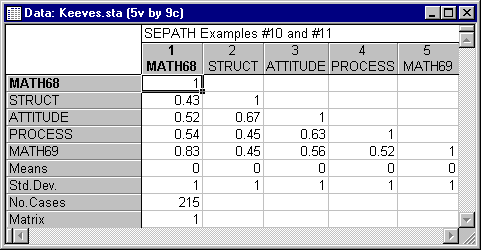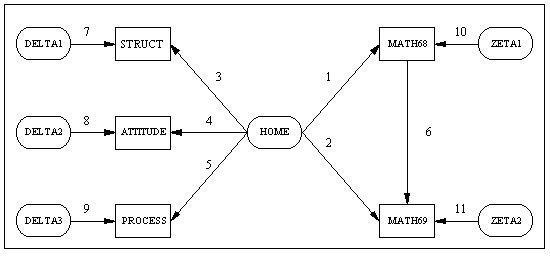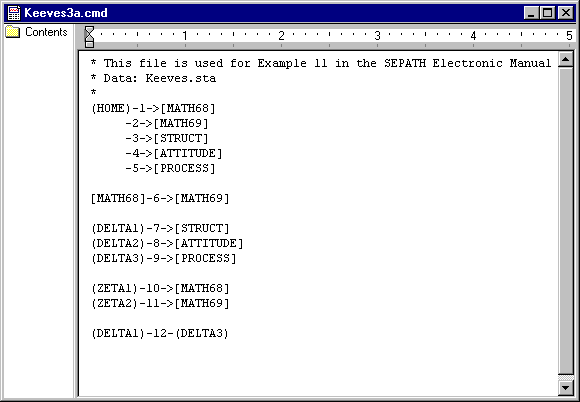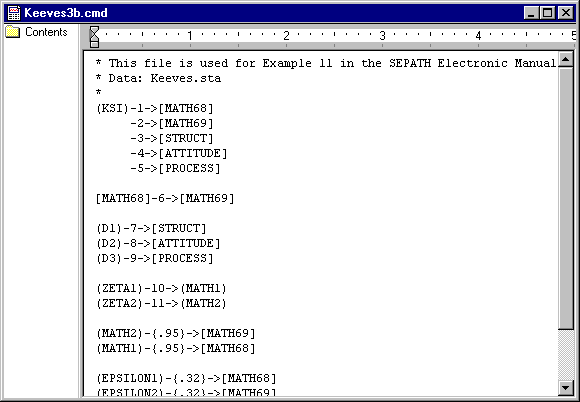Example 11: Structural Models for Home Environment and Mathematics Achievement
Jöreskog and Sörbom (1982) fit two structural models of their own to the Keeves (1972) data analyzed in a different manner by Cooley and Lohnes (1976). The Cooley and Lohnes approach is demonstrated in Example 10: A Multiple Regression Model for Home Environment and Math Achievement. The data are in the file Keeves.sta. Open this file via the File - Open Examples menu.
A path diagram for the first model fit by Jöreskog and Sörbom (1982) is shown below.
This model takes measurement errors in the home variables into account and treats them merely as fallible indicators of an aggregate construct variable "home." PATH1 statements for this model are in a file called Keeves3a.cmd (also in the /Examples/Datasets/SEPATH directory of STATISTICA). (You can run this model by clicking the Open model button on the Advanced tab of the Structural Equation Modeling dialog, choosing this file, and clicking the OK (Run model) button.)
A somewhat different model is represented in the diagram below. This model incorporates errors of measurement in the measures of mathematics achievement. It assumes that reliabilities for the two measures are known to be 0.90. Consequently the path coefficients representing true score and error variance coefficients are shown as fixed in the diagram.
PATH1 statements for this model are in a file called Keeves3b.cmd (also in the /Examples/Datasets/SEPATH directory of STATISTICA). (You can run this model by clicking the Open model button on the Advanced tab of the Structural Equation Modeling dialog, choosing this file, and clicking the OK (Run model) button.)





